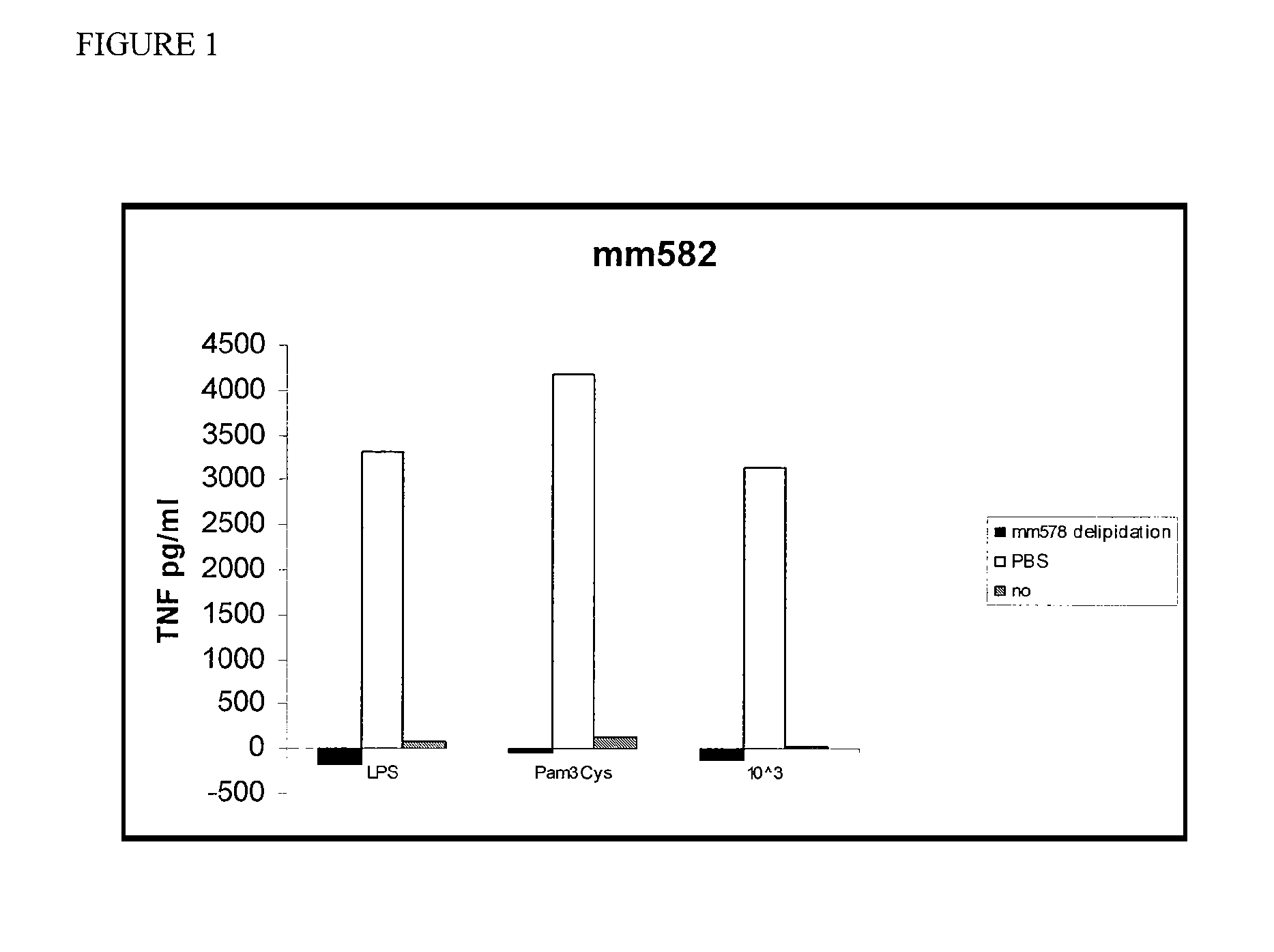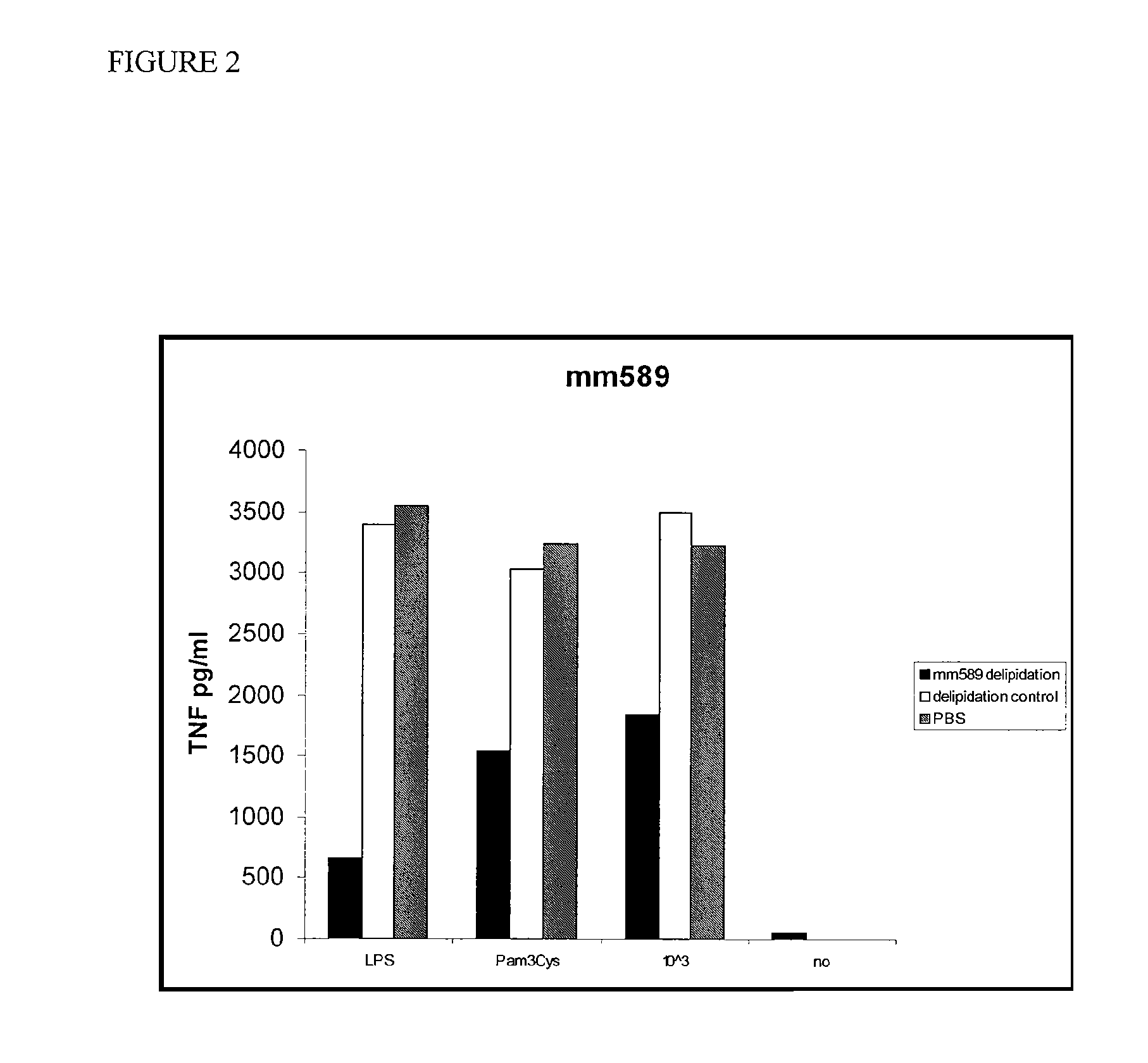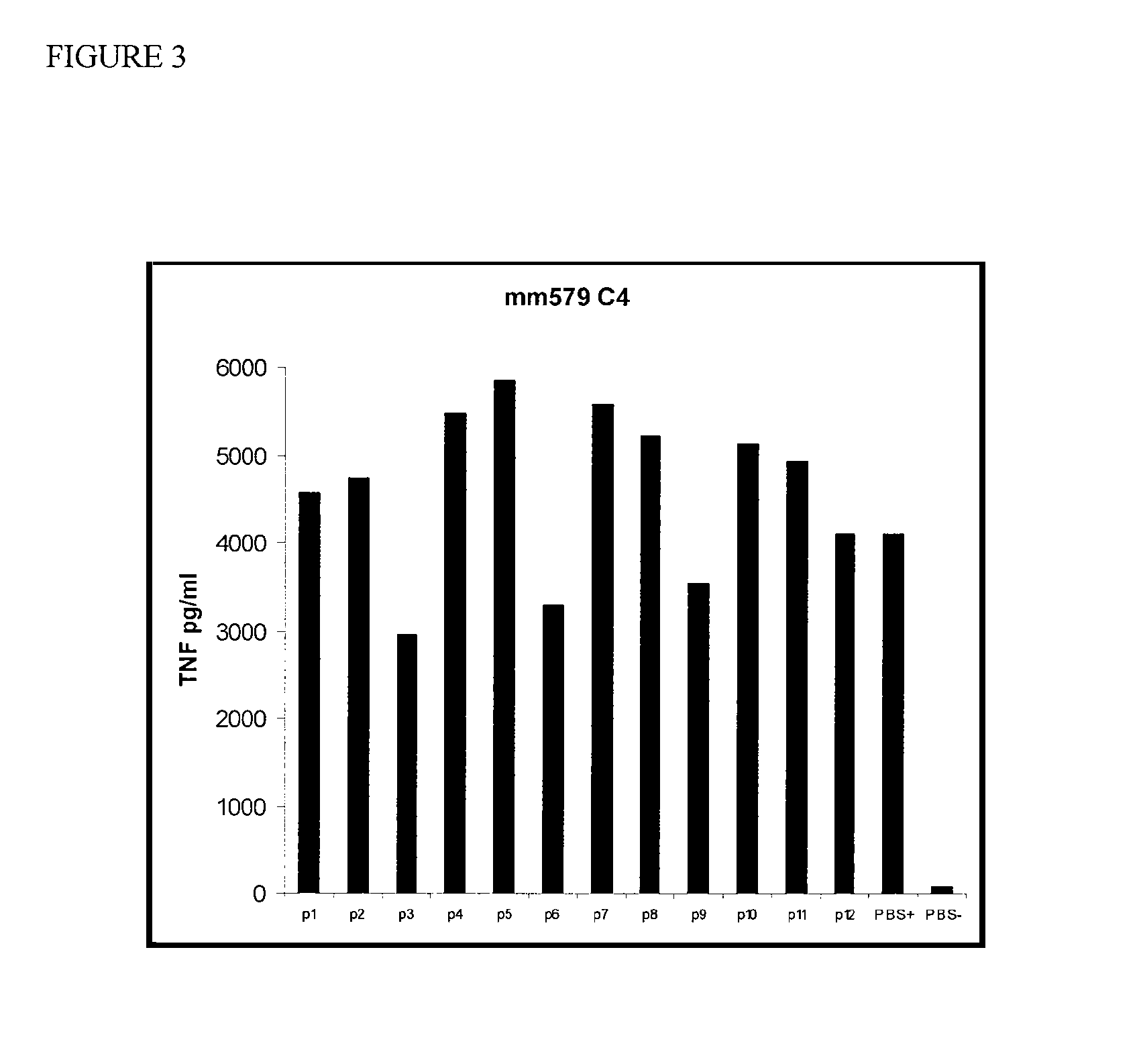Use of apolipoproteins to decrease inflammation
a technology of apolipoproteins and apolipoproteins, which is applied in the direction of peptide/protein ingredients, immunological disorders, drug compositions, etc., can solve the problems of serious chronic inflammation, such as in autoimmune diseases, and achieve the effect of reducing or preventing chronic or acute inflammatory responses
- Summary
- Abstract
- Description
- Claims
- Application Information
AI Technical Summary
Benefits of technology
Problems solved by technology
Method used
Image
Examples
example 1
Identification of Apolipoproteins A2 and C3 as TNF-Inhibiting Serum Factors
[0036]As shown in FIG. 1, total delipidated mouse HDL completely inhibited LPS-mediated induction of TNF in macrophages. In particular, total delipidated mouse
[0037]HDL was incubated with macrophages in the presence of LPS, a TLR2 (Toll-like receptor 2) agonist (Pam3Cys), or killed E. coli bacteria (10e3). The culture supernatants were assayed for the presence of TNF after 18 hours. These experiments were repeated and a similar, although less-marked effect was observed (FIG. 2). Total delipidated mouse HDL was then fractionated on a C4 reverse phase HPLC (high pressure liquid chromatography) column. The fractions were tested for activity in the TNF-induction bone marrow derived macrophage assay as described herein. Three peaks of activity were identified (FIG. 3). Protein analysis of fraction p6, the middle peak, by mass spectroscopy indicated that this peak contains Apolipoprotein A2 and Apolipoprotein C3.
example 2
Purification of Apolipoprotein A2 and C3
[0038]To purify Apolipoprotein A2 and Apolipoprotein C3, twelve milliliters of mouse serum were adjusted to a median density of 1.21 g / ml with KBr, and centrifuged (2 ml each tube) at 48,700 rpm in a Beckman SwrrTi rotor (250,000×g) at 4° C. for 42 hours. The top thirds of the centrifuge tubes were collected and washed by a repeat centrifugation using identical conditions for 65 hours. The top third of the washed material was transferred to new tubes and adjusted to a density of 1.063 g / ml with KBr. This material was centrifuged at 48,700 rpm (250,000×g) for 42 hours. The bottom third of this tube was collected after centrifugation and dialyzed against PBS for 48 hours. This material was delipidated with chloroform / methanol as described by Brewer, Jr. et al. (“Isolation and Characterization of Apolipoproteins A-I, A-II, and A-IV,” Methods in Enzymology 128:223-246, 1986). Briefly, 3 mls of the collected material above were mixed with same volu...
example 3
Materials and Methods
[0039]The experiments described herein may be carried out using the following materials and methods.
Macrophage Assay
[0040]The macrophage assay has been optimized and streamlined for high sensitivity, small volumes, and rapid turnover of results. Any type of macrophage (e.g., mouse bone marrow-derived macrophages) may be used for this assay. The cells can be prepared in large numbers, frozen in aliquots and have less day-to-day variation than the RAW cell line. The cells can be prepared and stimulated with a fixed concentration of LPS on a sensitive portion of the dose response curve in the presence of separated fractions of mouse serum. LPS is used simply to activate macrophages for the assay and the results obtained using LPS-activated macrophages are indicative of results expected for activated macrophages in general. Fractions can be added to pre-prepared and slightly concentrated media to prevent dilution. Supernatants can be tested by ELISA for TNF (or IL-1...
PUM
| Property | Measurement | Unit |
|---|---|---|
| temperature | aaaaa | aaaaa |
| temperature | aaaaa | aaaaa |
| median density | aaaaa | aaaaa |
Abstract
Description
Claims
Application Information
 Login to View More
Login to View More - R&D
- Intellectual Property
- Life Sciences
- Materials
- Tech Scout
- Unparalleled Data Quality
- Higher Quality Content
- 60% Fewer Hallucinations
Browse by: Latest US Patents, China's latest patents, Technical Efficacy Thesaurus, Application Domain, Technology Topic, Popular Technical Reports.
© 2025 PatSnap. All rights reserved.Legal|Privacy policy|Modern Slavery Act Transparency Statement|Sitemap|About US| Contact US: help@patsnap.com



